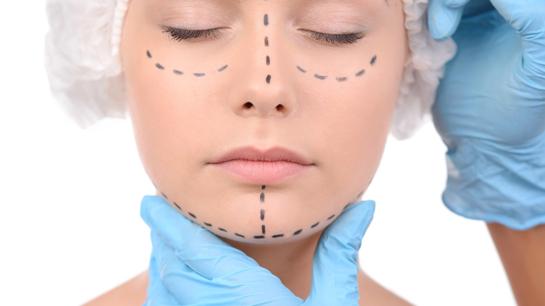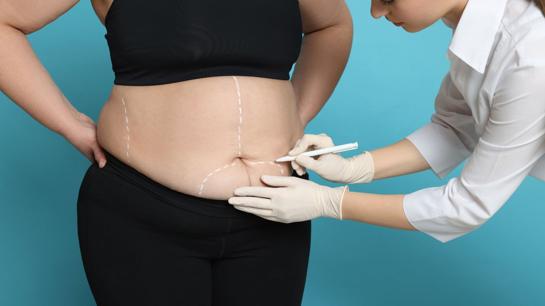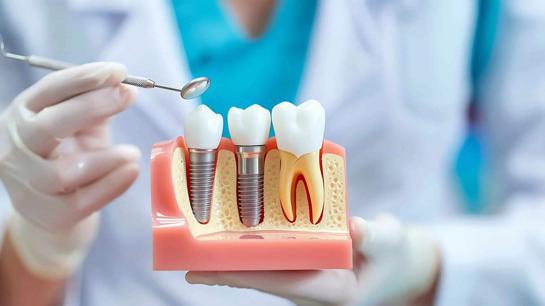Dental Fillings Abroad Guide
Exploring dental fillings abroad? Discover how dental tourism offers affordable care, modern clinics, and safe treatment overseas. A down-to-earth guide to dental care abroad and what to expect when travelling for fillings.
Why’s Everyone Suddenly Talking About Getting Fillings Overseas?
Let’s just lay it out. Going abroad for dental fillings isn’t exactly the plot of an adventure novel, but lately, it’s been popping up again and again in conversations, forums, even daydreams of people counting the cost of care at home. Maybe a friend returned from a trip with not just a suntan, but a freshly filled tooth. Maybe your last local dental quote for a small filling nearly sent you running for the hills (or at least sharpening your own drill—don’t do that).
So, what’s behind this new wave of dental tourism—especially for something as simple as a cavity filling?
Turns out, it’s a mix of real-world economics, changing perceptions, and, frankly, the drive to get quality care without feeling gouged or ignored. Let’s unpack the hype, the hope, and the honest-to-goodness facts about flying overseas to get your teeth sorted—no luxury spa language, just real talk.
First Things First: What Are Dental Fillings and Why Do They Matter?
You probably already know, but let’s not skip basics. Dental fillings are what stands between you and the chaos of untreated dental decay. Whether it’s from one too many late-night snacks or just plain genetics, cavities happen.
A “filling” is exactly what it sounds like—a dentist removes the decayed part and fills the hole with material (composite resin, amalgam, sometimes gold or porcelain). Sounds routine—but the real story is in the details: technique, material, experience, and, not least, cost.
In a lot of Western countries, even the simplest filling racks up a bigger bill than most basic medical treatments (go figure). That’s why people start googling dental care tourism, then realize: maybe getting your cavity fixed in another country isn’t so wild after all.
Dental Tourism for Fillings: Not Just for the Brave (or the Broke)
It’s tempting to imagine dental tourism as something for daredevils or people out of options. Truth is, you might be surprised who’s on that plane with you: teachers, small business owners, retirees, careful planners—the kinds of people who’d research a new toaster for two weeks before clicking “buy.”
Why? Because dental tourism isn’t just about saving a buck—it’s about:
- Accessing modern care when home systems are jammed up
- Avoiding astronomical prices for basic procedures
- Seeking a better patient experience
- Wrapping needed care into a bigger (sometimes much-needed) change of scenery
Of course, it’s not for everyone. But it’s much less “out there” than it once sounded.
How Much Can You Actually Save? (A Bit About Money, Honestly)
Let’s not dodge it: cost is a top reason people start searching for dental tourism options for fillings. In much of the US, UK, and Canada, a small composite filling can cost you anywhere from $150 to $400+ (sometimes much more for multi-surface work, or “premium” materials). Ouch.
Abroad? In the right clinics, the price might fall to $40–$100. You can see why this is tempting, especially if you’re facing multiple fillings.
But be wary of letting price alone make your call. Sometimes a bargain hints at poor-quality materials, outdated equipment, rushed appointments, or—at worst—sketchy infection control. More on how to tell the difference in a bit.
Here’s Where Dental Care Tourism Stands Out
Now, you might wonder: is it just the price, or is there more to this? Turns out, there’s a full spectrum of factors:
1. Speed and Accessibility
Have you ever tried to schedule a dental filling at home only to be told it’ll be three months before you’re squeezed in? In many dental tourism destinations, international patients can book within days—or even next-day—thanks to reserved slots for travelers.
2. Technology & Techniques
Surprisingly, some of the most respected clinics overseas have invested heavily in digital x-rays, air abrasion, newer, tooth-colored materials, and advanced sterilization routines. In fact, dental tourism hotspots often have newer kit than your average main-street practice, precisely because they compete for demanding international patients.
3. Personal Attention
A quietly reported bonus: the care. In many overseas clinics, appointments are longer, explanations clearer, and providers genuinely listen—maybe because you’re both a patient and a customer from far away… or maybe just because the business model supports more personal care.
4. Travel and Recovery Blending
Some people really do wrap basic dental procedures into a vacation or family trip. Recovery from a basic filling doesn’t take days, so you might fit sightseeing around your appointments—just don’t plan anything too adventurous right after having your jaw frozen.
Know the Risks Before You Pack Your Toothbrush
Okay—rebound time. Dental tourism has real perks, but also some honest risks. Here’s what you should really consider:
- Aftercare Concerns: If a filling goes bad, cracks, or becomes sensitive after you leave, are you prepared to seek care at home (and pay local rates)?
- Materials & Standards: Not every clinic uses the same quality materials or safety protocols as you’re used to. Research the standard of care and ask exactly what type of filling will be used.
- Language Barriers: Even in clinics with English-speaking staff, small misunderstandings can creep in. Don’t be afraid to ask for things in writing.
- Regulatory Differences: Complaint mechanisms and recourse options abroad may be weaker. Know your rights before you go.
- Travel Costs Add Up: Occasional unexpected expenses—extra nights, return visits—can eat into your savings.
What’s the Process? (And How Complicated Is It, Really?)
Step 1: Deep Dive Research
Start with comparison:
- Where are clinics certified?
- Who’s providing care—dentist, assistant, hygienist?
- What’s their track record with foreign patients?
- Clinic hygiene protocols: Are they clear and up to your standards?
Step 2: Remote Consultation
Most international clinics now offer email, video, or phone intake. Send recent x-rays if you have them; describe issues; get an initial assessment. Nothing beats an in-person evaluation, but it’s better than a surprise.
Step 3: Arrival and Initial Exam
On arrival, you’ll get assessed with up-to-date digital imaging or clinical checks. Sometimes old decay turns out bigger than expected; sometimes a “routine” filling morphs into something slightly more complex.
Step 4: Treatment
Fillings themselves are fast—20 minutes to an hour per tooth is typical. Ask about:
- What material will be used (composite, amalgam, glass ionomer, etc.)
- Local anesthesia options (some people react differently)
- Infection control steps
Step 5: Final Checks and Records
A trustworthy clinic will walk you through aftercare (what to expect, what to watch for), and provide a clear description of all work done for your records (very helpful should future care be needed at home).
Kinds of Fillings: What Options Might You Get Abroad?
Depending on the clinic and your own needs, here’s what you’ll likely come across:
| Type of Filling | Description | Advantages | Disadvantages |
|---|---|---|---|
| Composite Resin | Tooth-colored plastic + glass | Aesthetic, bonds to tooth | Can stain/chip over time |
| Amalgam | Silver alloy | Durable, cost-effective | Not tooth-colored, carries debate over mercury content |
| Glass Ionomer | Tooth-colored, fluoride-releasing | Good for kids/low stress areas | Less durable for chewing |
| Porcelain | Lab-made, very natural look | Long-lasting, aesthetic | More expensive, needs two visits |
Not every clinic offers every type, so—especially if you care about the look—make sure you discuss options before they start drilling.
Who Actually Does the Work? (Team and Staff Details)
This matters more than you think. In high-standard clinics popular for dental tourism:
- The provider is a licensed dentist (not just an assistant or technician)
- Many will have additional certifications, sometimes from US/UK/European boards
- Leading clinics often have English-speaking nurses, dental assistants, and patient coordinators
- Infection control staff keep strict protocols in place (ask to see them; it’s normal)
- Support staff help you through paperwork, insurance claims (if used), and prepping for travel
Clinic Accreditations and Trust-Builders
This is where skimming the website isn’t enough.
- Look for international certifications (ISO 9001, others)
- National dental association recognition is a must
- Does the clinic participate in ongoing education, quality reviews, or foreign patient programs?
- Transparency matters: real explanations, not just fancy titles or photos
- Will they share details of the filling materials and brands used?
The Technology: Not Just Wires and Drills
Surprising to many, major dental tourism clinics are often brimming with:
- Digital X-rays or 3D cone-beam imaging for more accurate diagnoses
- Computer-assisted filling placement for complex cases
- High-standard sterilization: autoclaves, disposable materials
- High-quality light-cured composites for more natural fillings
- Advanced suction and isolation techniques for comfort
Results, Stats, and What You Can Realistically Expect
No one can guarantee perfection. But here’s the reality in top clinics:
- Success Rate for Routine Fillings: Exceeds 95% (meaning no need for replacement or correction in the first year)
- Patient Satisfaction: High, driven largely by cost savings and friendly care—but dependent on clear aftercare instructions and honest communication
- Follow-Up Care Needs: Less than 10% of travelers need additional early-stage work (usually for very deep, complex cavities or if post-op discomfort arises)
Comparing at a Glance: Fillings at Home vs. Fillings Abroad
| At Home (US/UK/Canada) | Abroad (Dental Tourism Clinic) | |
|---|---|---|
| Cost | $150–$400+ | $40–$100 (varies by clinic) |
| Wait Time | Days–months | Days–a week (often faster) |
| Materials | Wide selection | Usually similar, verify ahead |
| Team | Local dentist/familiar | Specialist with int’l focus |
| Aftercare | Local, easy follow-up | You’re on your own back home |
| Travel Factor | None | Plan flights, accommodations |
| Language | Native | English often, but confirm |
| Legal Protections | Strong | Weaker abroad, know limits |
Risks, Quirks, and Little Things You Won’t Find in Brochures
- If you need multiple fillings, plan a day or two between appointments for your own comfort.
- Bring a written summary of your dental and medical history: medications, allergies, last checkups—all help your new dentist avoid surprises.
- Diet: You might be told to lay off extra-hot or hard foods for a day or two (not always easy on the road).
- Paperwork: Ask for printed documentation of all treatments done—it’ll pay off if you need future fixes at home.
- Travel tip: Don’t book critical tours or flights right after your dental appointment; you never know if local anesthesia will wear off slower than you expect.
Honest Answers to the Stuff Most People Actually Worry About
Q: What if something goes wrong after I get home?
A: Simple fillings are low-risk, but occasionally patients feel lingering sensitivity or notice a filling chip. Be ready to see a local dentist if this happens—some home clinics may be reluctant to “touch” work done abroad, so save those treatment records.
Q: Can I trust the dentist?
A: Background checks matter. Ask about training, memberships, and language skills. It’s reasonable—even expected—to inquire until you’re satisfied.
Q: Should I tie fillings to a full vacation?
A: There’s nothing wrong with making lemonade out of dental lemons—but pace yourself. Some people underestimate how weird traveling with a numb face feels!
Q: Will aftercare be included?
A: Many clinics offer remote follow-up by phone or video if you’re worried, but complex problems may require in-person care (and more travel).
Final Thoughts: Is Dental Tourism for Fillings Worth It?
If you need complicated work, are anxious about cost, or want a new experience, dental care tourism can be surprisingly rewarding. But it isn’t for everyone.
- If the idea of remote follow-up makes you uneasy, or you can’t tolerate risk, home care is better.
- If you’re organized, do your due diligence, and don’t mind a bit of uncertainty and travel adventure—it’s worth exploring.
Remember: your teeth, your health, your decision. Ask the odd questions. Insist on details. And don’t be afraid to press pause if something doesn’t feel right along the way.
May your fillings be smooth, your trip uneventful, and your smile as bright as you hoped for—wherever you find your care.





















